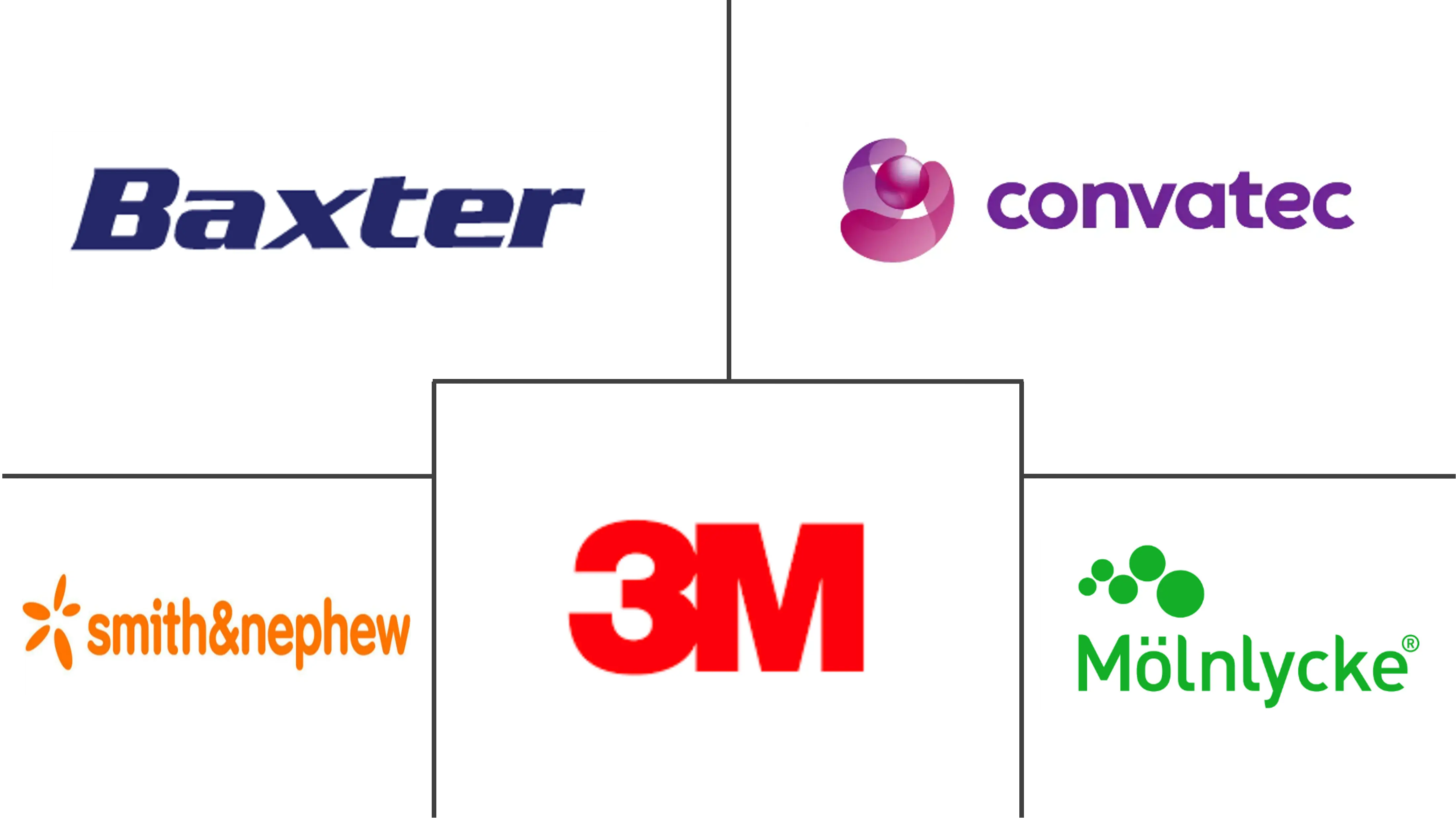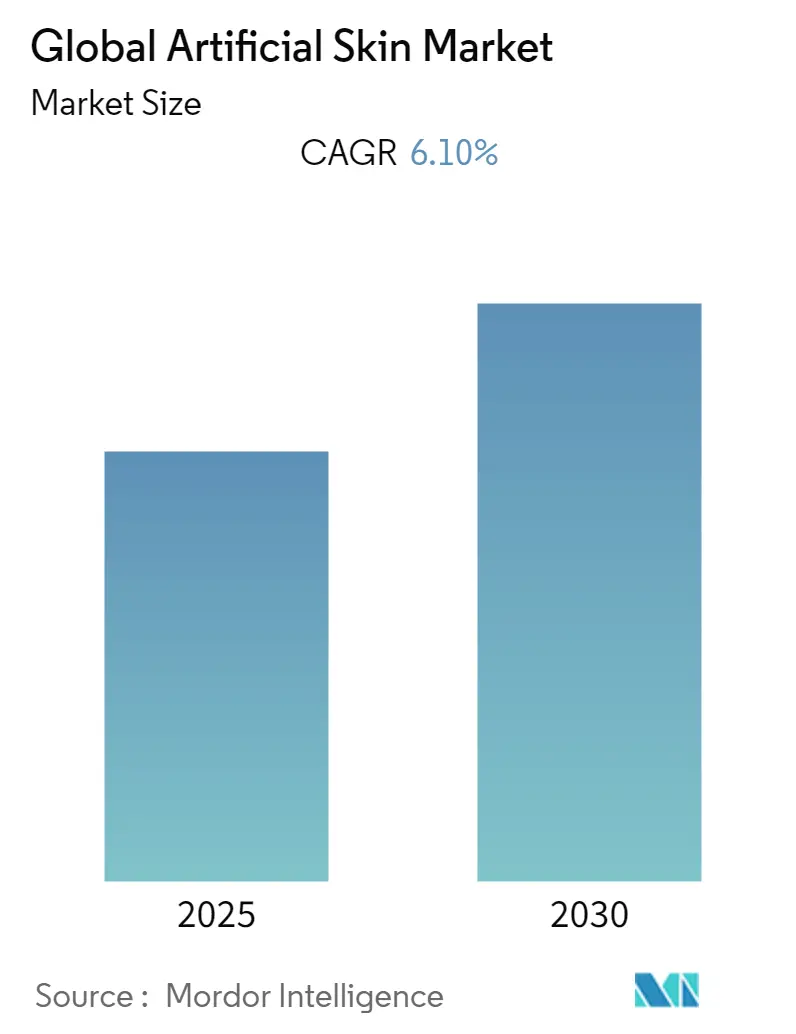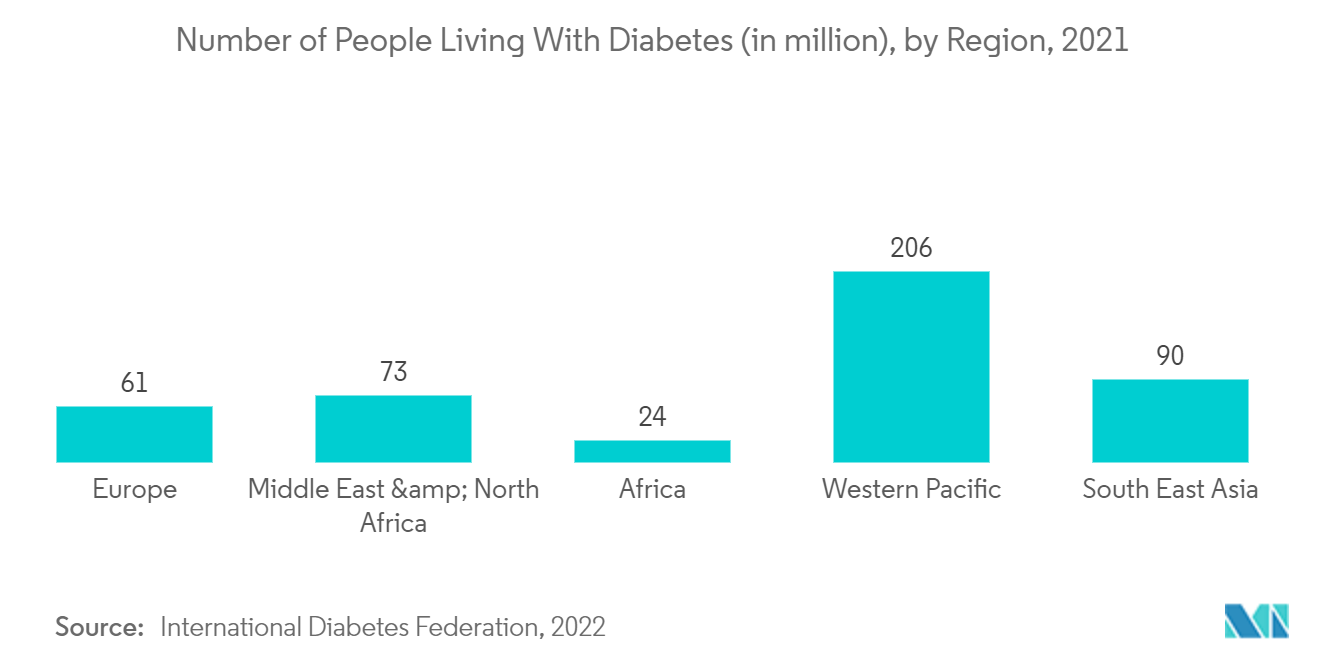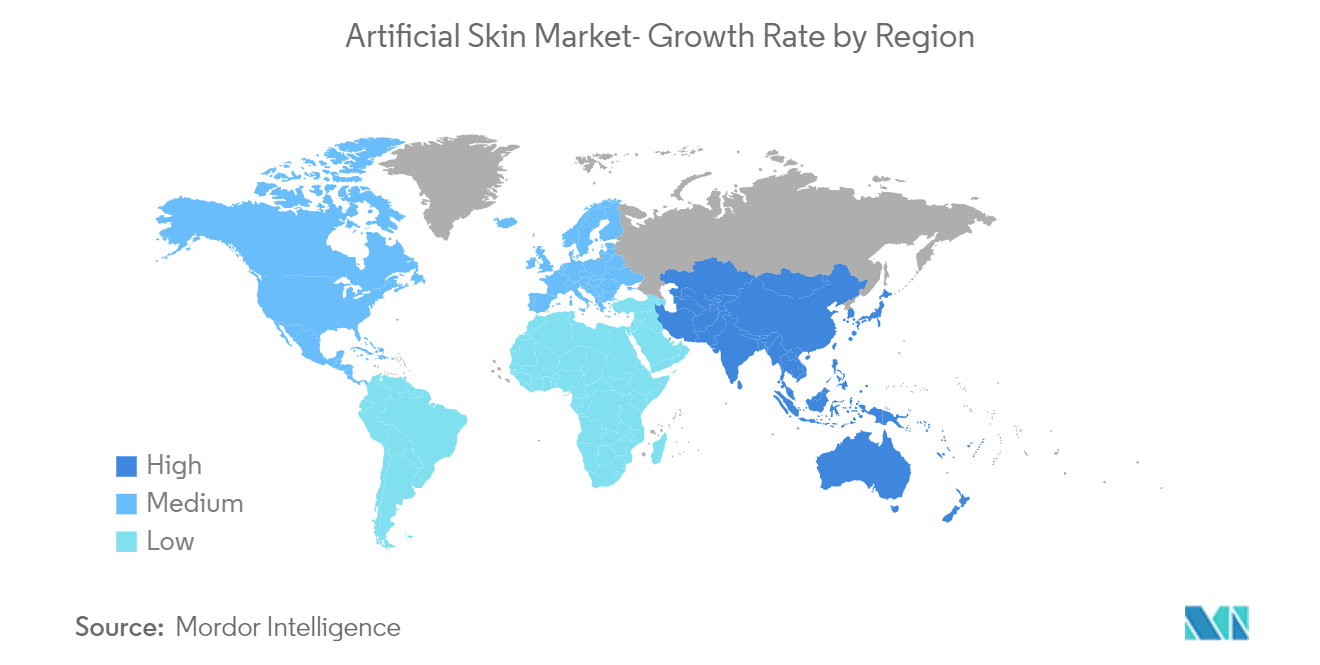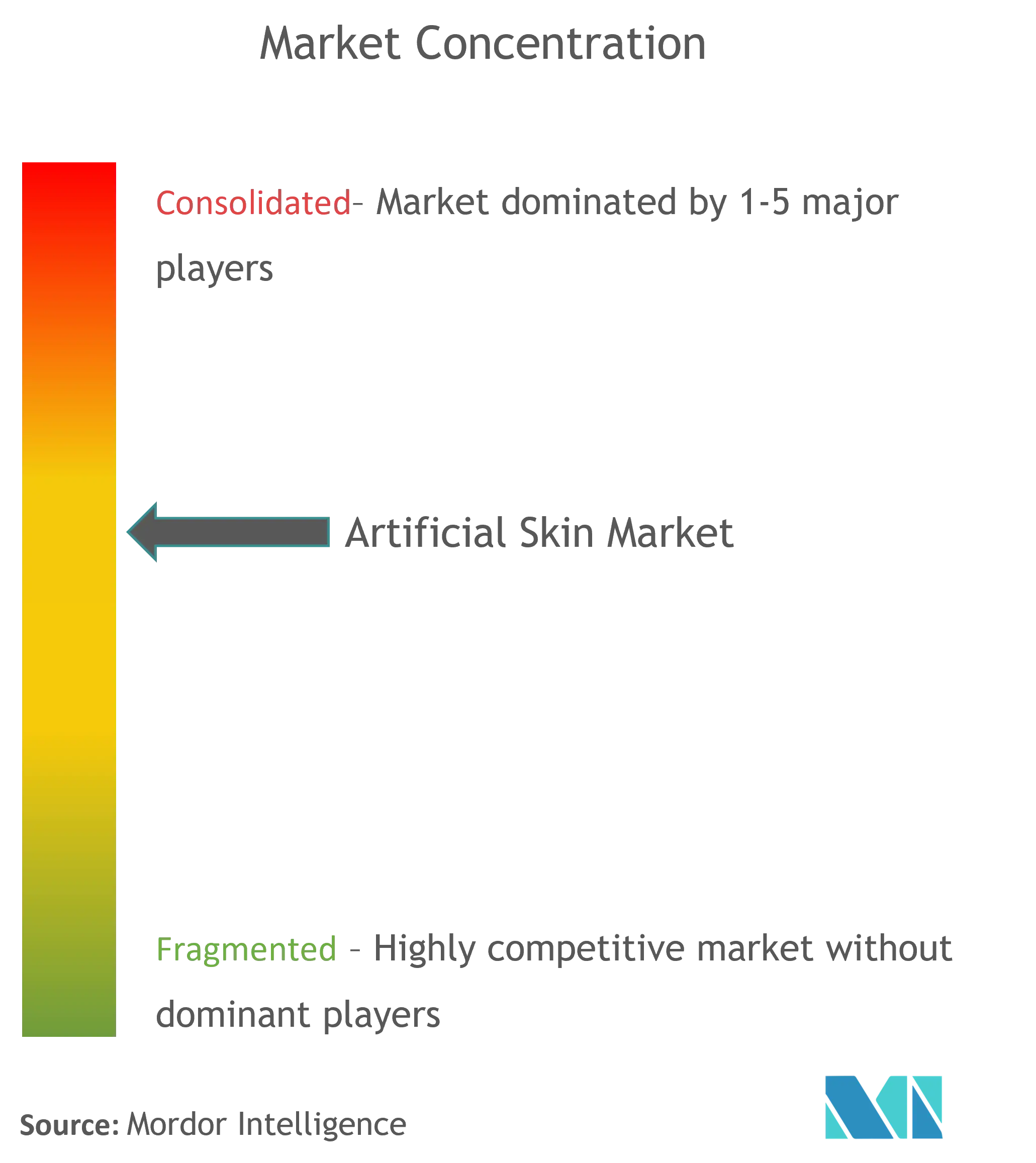Artificial Skin Market Analysis
The Global Artificial Skin Market is expected to register a CAGR of 6.1% during the forecast period.
The increasing number of cases of chronic diseases due to the pandemic's outbreak has accelerated the market's growth during the pandemic. According to the study titled, "Impact of COVID-19 pandemic on chronic diseases care follow-up and current perspectives in low resource settings: a narrative review" published by the National Library of Medicine in June 2021, COVID-19 patients with hypertension, diabetes, and coronary heart disease are more likely to progress to severe conditions. It also reported that patients with COVID-19 are less likely to be cured. The high rate of chronic diseases has triggered a high rate of chronic wounds as well. Chronic wounds arise as a result of a prolonged inflammatory phase during the healing process, which prevents skin regeneration. In addition, COVID-19 patients experience slow wound healing, which has triggered the rate of chronic wounds. According to a journal published by The Ohio State University in February 2021, a diabetes patient who has suffered from COVID-19 is witnessing slow wound healing. Typical treatment of chronic wounds involves the application of autografts, cadaveric allografts, and topical administration of antioxidant, anti-inflammatory, and antibacterial agents. Many artificial skin products are used for the treatment of chronic wounds. For instance, Dermagraft is FDA approved for the treatment of neuropathic and diabetic ulcers and wounds secondary to epidermolysis bullosa. Therefore, such factors have anticipated the market's growth during the pandemic.
The increasing awareness of various skin treatment procedures has led to the rising demand for artificial skin. Artificial skin lacks immunogenic cells like dendritic cells, and hence auto-rejection is not observed. The increase in the number of road accidents, burns, and trauma-related incidents has led to significant growth in the artificial skin market. According to the report published by the American Burn Association in February 2021, around 400,000 people are treated for burns each year in the United States. Thus, the artificial skin market is anticipated to witness a considerable growth rate over the forecast period.
However, the high cost of treatment, lack of reimbursements, and stringent regulatory norms are likely to impede the market's growth over the forecast period.
Artificial Skin Market Trends
Chronic Wounds Segment is Expected to Witness Growth Over the Forecast Period
Chronic wounds are those that do not undergo a normal, orderly, and timely repair sequence. They are common and often mistreated. The morbidity and associated costs of chronic wounds highlight the need to implement guidelines for wound prevention and management. Common chronic wounds include diabetic foot ulcers, venous leg ulcers, and pressure ulcers. With the increase in the global geriatric population, diabetes, and obesity, the prevalence of chronic wounds has been significantly increasing. For instance, according to the study titled, "The current burden of diabetic foot disease" published by the National Library of Medicine in February 2021, diabetes causes severe and diffuse disease below the knee. The lifetime risk of developing a diabetic foot ulcer is between 19.0% and 34.0%. Artificial skin is one of the potential treatments for diabetic foot ulcers. It helps to stimulate the regeneration of lost tissue and replace the wound with functional skin. Therefore, such an instance is anticipated to drive the demand for artificial skin for chronic wounds, thereby propelling the segment's growth.
Venous leg ulcers are also another common chronic wound after diabetic leg ulcers. Venous leg ulcers are open lesions of the lower extremity that account for 60.0% to 80.0% of all leg ulcerations that occur in the presence of venous disease. According to the study titled, "Prevalence and incidence of venous leg ulcers-a protocol for a systematic review" published in May 2021, around 60.0% of venous leg ulcers result in chronic wounds. Similarly, as per the study titled " Venous Leg Ulcers: Advanced Therapies and New Technologies" in November 2021, the prevalence of venous leg ulcers differs between 1.5% and 3.0% among the general population. Double-layer artificial skin, used in conjunction with a compression bandage, helps to accelerate the healing of venous leg ulcers when compared to simple dressing with compression. Therefore, increasing cases of venous leg ulcers are expected to spur the demand for artificial skin for chronic wounds.
Hence, due to the abovementioned factors, the chronic wounds segment is expected to witness significant growth over the forecast period.
North America is Expected to Dominate the Artificial Skin Market
North America is expected to dominate the overall artificial skin market throughout the forecast period. The growth is due to factors such as increasing chronic wounds due to the growing number of chronic diseases and the rising geriatric population. For instance, as per the report published by the Trust for America's Health Organization in 2020, the United States adult obesity rate represents around 42.4%, and it is for the first time the national rate has passed the 40.0% mark. Obesity is one of the major causes of triggering chronic wounds as it leads to vascular insufficiency. Vascular insufficiency results in poor oxygenation, which leads to delays in normal wound healing and even tissue necrosis. Therefore, an increasing number of obesity cases in this region is anticipated to propel market growth over the forecast period.
Key product launches, a high concentration of market players or manufacturers' presence, acquisitions and partnerships among major players, and a high number of chronic wounds in the United States are some of the factors driving the growth of the artificial skin market in the country. For instance, chronic wounds pose a significant burden to patients, healthcare professionals, and the United States healthcare system, affecting 5.7 million patients and costing an estimated USD 20.0 billion per year. Furthermore, in June 2021, the United States Food and Drug Administration approved StrataGraft for the treatment of adult patients with thermal burns containing intact dermal elements. Therefore, such factors and development are anticipated to spur the market's growth in the United States.
Therefore, owing to the aforesaid factors, the growth of the studied market is anticipated in the North American region.
Artificial Skin Industry Overview
The artificial skin market is highly competitive and consists of significant major players that dominate the market. Many small and medium-sized enterprises (SMEs) are also setting foot in the artificial skin market, thereby leading to an impactable growth over the forecast period. The competitive landscape includes an analysis of a few international as well as local companies which hold the market shares and are well known, including Integra Lifesciences Corporation, Smith & Nephew Plc, Molnlycke Health Care AB, Medtronic, 3M, Baxter International, MiMedX, Avita Medical, Mylan, Johnson & Johnson Services, Solsys Medical Inc., Paul Hartmann AG, Coloplast A/C, and ConvaTec Group Plc, among others.
Artificial Skin Market Leaders
-
Integra Lifesciences Corporation
-
Smith & Nephew Plc
-
Medtronic
-
Molnycke Health Care AB
-
Baxter International Inc.
- *Disclaimer: Major Players sorted in no particular order
Artificial Skin Market News
- In September 2021, South Korean scientists claim to have developed a skin-like artificial material inspired by natural biology that can rapidly adjust its hues like a chameleon to match its surroundings.
- In March 2021, Aroa Biosurgery's Symphony received FDA clearance, which is designed to promote healing during the proliferative phase and shorten the time to wound closure, especially in patients whose healing is severely compromised or compromised by disease.
Artificial Skin Industry Segmentation
As per the scope of the report, artificial skin is a synthetic substitute for human skin that can induce the regeneration of the skin. The skin is the largest organ in the human body and comprises two layers, namely, the epidermis and dermis. Severe burns and wounds make the body vulnerable to infections and impair the healing process. Artificial skin helps to overcome this obstacle and quickens the healing of wounds and burns. Artificial skin does not contain any immunogenic cells, hence not rejected by the body. The artificial skin market is segmented by Product type (Permanent, Temporary, and Composite), by Replacement Area (Dermal, Epidermal, and Composed) by Material (Natural, Synthetic and Both), By Application (Acute Wounds, Chronic Wounds, and Others), By End User ( Hospitals, Burn Care Centers and Others), and (North America, Europe, Asia-Pacific, Middle East, and Africa, and South America). The market report also covers the estimated market sizes and trends for 17 different countries across major regions, globally. The report offers the value (in USD million) for the above segments.
| By Product Type | Permanent | ||
| Temporary | |||
| Composite | |||
| By Replacement area | Dermal | ||
| Epidermal | |||
| Composed | |||
| By Material | Natural | ||
| Synthetic | |||
| Both | |||
| By Application | Acute wounds | ||
| Chronic wounds | |||
| Others | |||
| By End User | Hospitals | ||
| Burn care Centers | |||
| Others | |||
| Geography | North America | United States | |
| Canada | |||
| Mexico | |||
| Europe | Germany | ||
| United Kingdom | |||
| France | |||
| Italy | |||
| Spain | |||
| Rest of Europe | |||
| Asia Pacific | China | ||
| Japan | |||
| India | |||
| Australia | |||
| South Korea | |||
| Rest of Asia-Pacific | |||
| Middle East and Africa | GCC | ||
| South Africa | |||
| Rest of Middle East and Africa | |||
| South America | Brazil | ||
| Argentina | |||
| Rest of South America | |||
Artificial Skin Market Research FAQs
What is the current Global Artificial Skin Market size?
The Global Artificial Skin Market is projected to register a CAGR of 6.1% during the forecast period (2025-2030)
Who are the key players in Global Artificial Skin Market?
Integra Lifesciences Corporation, Smith & Nephew Plc, Medtronic, Molnycke Health Care AB and Baxter International Inc. are the major companies operating in the Global Artificial Skin Market.
Which is the fastest growing region in Global Artificial Skin Market?
Asia Pacific is estimated to grow at the highest CAGR over the forecast period (2025-2030).
Which region has the biggest share in Global Artificial Skin Market?
In 2025, the North America accounts for the largest market share in Global Artificial Skin Market.
What years does this Global Artificial Skin Market cover?
The report covers the Global Artificial Skin Market historical market size for years: 2019, 2020, 2021, 2022, 2023 and 2024. The report also forecasts the Global Artificial Skin Market size for years: 2025, 2026, 2027, 2028, 2029 and 2030.
Our Best Selling Reports
Artificial Skin Industry Report
Statistics for the 2025 Global Artificial Skin market share, size and revenue growth rate, created by Mordor Intelligence™ Industry Reports. Global Artificial Skin analysis includes a market forecast outlook for 2025 to 2030 and historical overview. Get a sample of this industry analysis as a free report PDF download.

